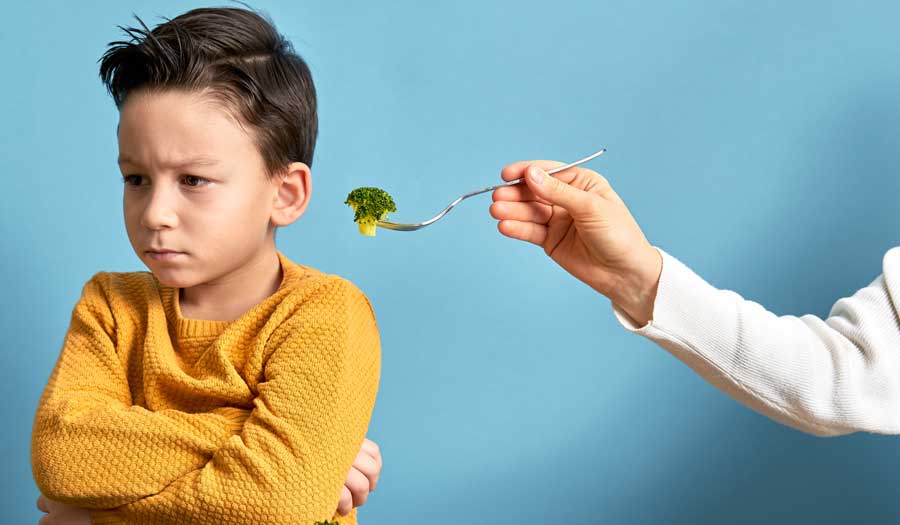“I Hate Vegetables”

Easy ways to eat more vegetables
- Add chopped vegetables (mushrooms, peppers, spinach) to your egg white omelette at breakfast.
- Put extra lettuce on your sandwich.
- Have crunchy vegetables (carrots, celery, cauliflower) cut in the fridge for quick snacking.
- Roast vegetables to eat as a side dish or add your salad for a pleasing flavor.
- Add diced or riced vegetables to brown rice or your favorite whole grain.
Here are 4 ways to learn to love vegetables.
-
Can you be healthy without eating vegetables?
All of the vegetable haters are reading this paragraph with hopeful anticipation it will contradict the decades of science that shows vegetables are essential for health. Sorry, to all of you who have ever said, “I hate vegetables”. The consumption of vegetables is linked to lower rates of heart disease, cancer and type 2 diabetes. Studies have shown people who eat more leafy green vegetables have a lower risk of stroke. Green-yellow vegetables are linked to lower cancer risk. Cruciferous vegetables (broccoli, Brussel sprouts) contain anti-cancer phytochemicals called glycosinolates. In addition, experts agree it is effective to eat fruit and vegetables for weight loss. “If weight loss is your goal, the largest component of your meal should be vegetables,” notes Kimberly Gomer, Director of Nutrition at the Pritikin Longevity Center and Spa.
-
What to eat when you don’t like vegetables
Vegetables are an essential part of a healthy diet, but some of them can taste bitter. The worst offenders are cruciferous vegetables, such as broccoli, Brussel sprouts, kale, turnip and cauliflower. You may want to avoid these vegetables if you’ve ever found yourself thinking “I hate vegetables” because they taste bitter. For some, it is easier to gain an appreciation for vegetables by first eating sweet tasting ones, such as carrots, squash, snap peas or bell peppers. Or, transform any bitter tasting vegetables into sweet tasting ones by roasting them. You won’t believe how sweet squash, beets, Brussel sprouts and cauliflower become when roasted. Roasting vegetables is quite easy: wash and chop the vegetables, place on a baking sheet and roast in the oven at 350°F until lightly brown and a little tender.
Over time, as you eat more vegetables your palate changes. You will enjoy the taste of vegetables more and more. Go ahead – start today! Try to eat one more serving of vegetables today than yesterday. Remember small sustainable steps are how to successfully make a healthy lifestyle change. It really works! In a study, every day parents gave their kids a vegetable the kid disliked. After two weeks, the kids ate more of that vegetable – some kids even reported that vegetable was their new favorite. If getting your kids to eat more vegetables is as simple as this small, sustainable change – it can be for you too! Yes, it is possible for you to learn to love vegetables.
-
But, “I hate vegetables”
If the word ‘vegetable’ makes you turn your nose up in disgust, maybe it is time to stop thinking about lettuce, carrots and eggplants as vegetables. Botanically speaking, tomatoes, eggplants, bell peppers and squash should be called fruits not vegetables. Meanwhile, carrots and turnips should be called roots, and celery called stems. Eliminating the word ‘vegetable’ from the conversation may seem like a goofy technique to convince a kid to eat vegetables, but by looking at vegetables differently you can remove mental blocks preventing you from eating them. “Attitude has everything to do with health,” notes Dr. Coral Avron, Director of Behavioural Health and Wellness at the Pritkin Longevity Center and Spa. A positive mindset is key to a healthy lifestyle.
-
What is the best vegetable to eat?
Vegetables can save lives. Yes, we all know vegetables float in water but, they’re not going to be a substitute for a life preserver. Kidding aside, vegetables can save lives when they are eaten, according to a study published in 2019. The research reported dietary risks are responsible for 22% of deaths. That means one in five deaths could be prevented if better food choices were made. The study suggested the best vegetables to eat include: green leafy vegetables, cruciferous vegetables and salad. Eating vegetables has been linked to a reduced risk of cardiovascular disease and death. How many vegetables should you eat per day? The study suggests benefits occur if a person eats a total of 800g per day (about 8 to 10 cups) of vegetables and fruits.
The best way to learn to eat more vegetables
The team of nutrition and culinary experts at the luxurious Pritikin Longevity Center & Spa in Miami, Florida can show you why vegetables can help you reach your health goals, and how easy it is to cook delicious vegetable-containing meals. The Pritikin diet and eating plan is packed with delicious and easy ways to include more vegetables into your day. You will never believe how good vegetables can taste!